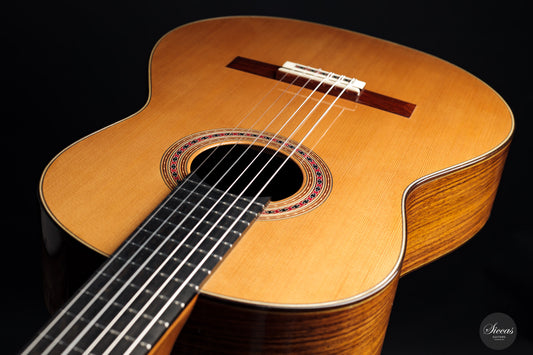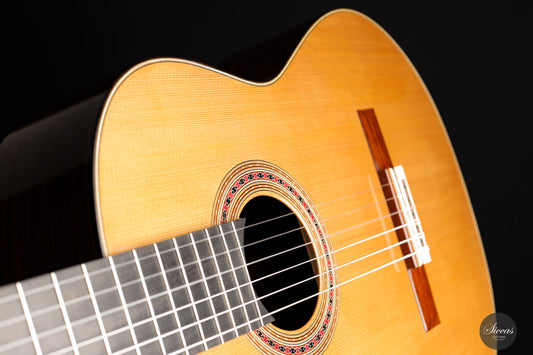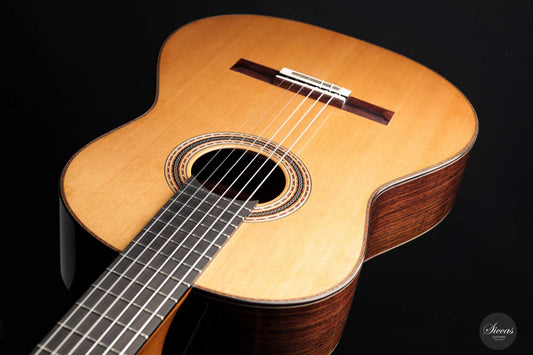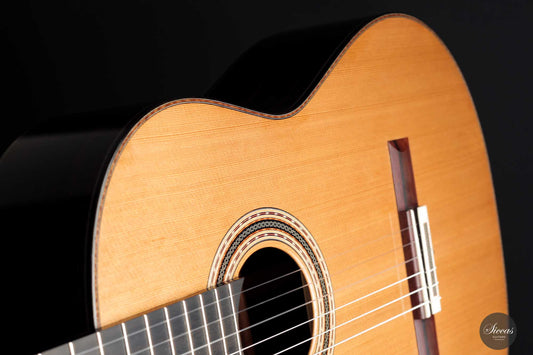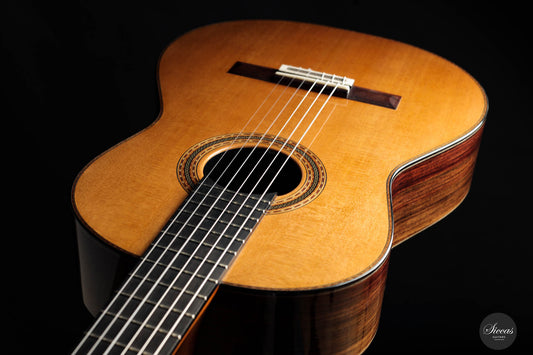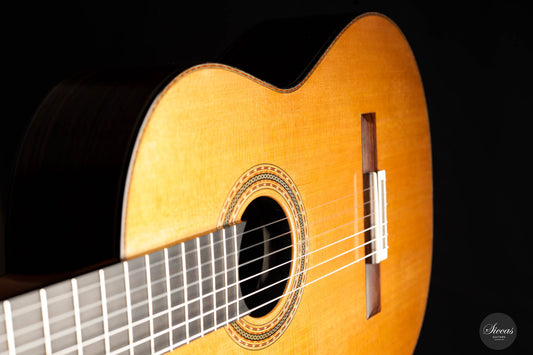Michel Bélair
-
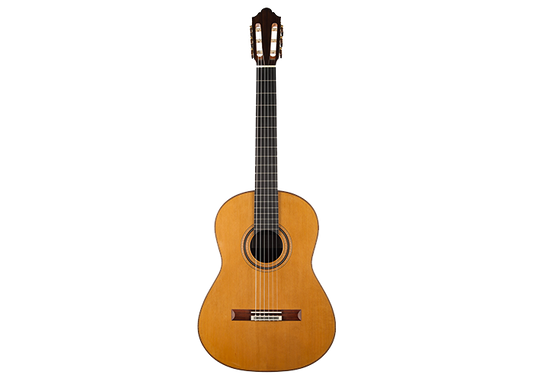
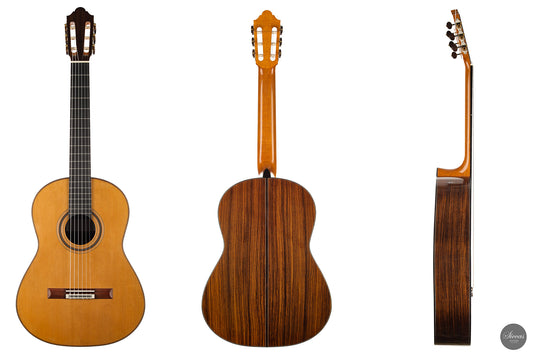 SoldSoldLuthier: Michel Bélair
SoldSoldLuthier: Michel Bélair -
Luthier: Michel Bélair
-
Luthier: Michel Bélair
-
Luthier: Michel Bélair
You May Also be Interested to Learn More About Our Museum
Michel Belair – A Journey of Passion and Craftsmanship
Michel Belair’s journey in the world of music began as a young teenager, sparked by his natural interest in playing the guitar. He pursued his guitar studies in the late 1980s under the guidance of Alvaro Pierri in Montreal, earning a B.MUS and a Master’s degree in Performance from McGill University. His passion for the instrument led him on a unique path, culminating in his becoming a guitar maker of note.
Studies in Paris and Connection to Daniel Friederich
His pursuit of excellence took him to Paris, where he was awarded a scholarship from the state, enabling him to study with the acclaimed Argentine guitarist Roberto Aussel for two years. Michel’s deep connection to the world of guitars had him playing Friederich guitars (No. 557) since 1984. During his studies in Paris, he often encountered Daniel Friederich in his workshop and at guitar concerts. His admiration for Friederich’s craft led him to approach him for a new guitar. Thus began the creation of guitar No. 763, a process that greatly fascinated Michel as he envisioned the transformation of raw materials into a magnificent musical instrument.
From Woodworking to Luthiery
Michel’s early exposure to woodworking through his father’s furniture-making hobby contributed to his evolving interest in the craft. He saw an opportunity to merge his passion for guitars with his fascination for wood, leading him to embark on the journey of building his own guitar. With guidance from Jean Rompré, a renowned and accomplished luthier, Michel delved into the art of guitar making. This intensive learning experience allowed him to craft his first guitar during that summer, a highly satisfactory achievement.
Scientific Approach and Material Exploration
His dedication to his craft led him to meticulously study and measure three Friederich guitars, even using X-rays to gain insights into their construction. Michel’s commitment to precision was further shaped through two visits to Olivier Fanton D’Andon’s workshop in France. These visits not only enriched his knowledge but also inspired him to develop tools and techniques that enhanced precision and repeatability in his craft.
Performer's Insight and Hommage Model
The influence of Daniel Friederich resonates deeply in Michel’s approach to guitar making. His remarkable journey as a musician and a student playing the same instruments as his mentors, Pierri and Aussel, instilled a heightened awareness of the nuances of sound production. These skills, honed as a performer, greatly enriched his journey as a guitar maker. Michel’s quest for innovation extended to experimentation with various aspects of guitar construction, such as solera shape, neck stiffness, and bracing variations. Collaborating with an exceptional engineer, he developed a machine that measures the Young’s modulus (stiffness) and the Q-factor of wood longitudinally and radially. This scientific approach enhanced his precision and allowed adjustments during the building process, impacting responsiveness, sustain, and other tonal characteristics.
Materials and Specifications
Currently collaborating with Qingchuan, Michel embarked on the journey of creating a homage to Daniel Friederich’s work. This tribute was driven by a desire to express gratitude for the profound influence that Daniel had on his life as a musician and maker. Michel aimed to replicate the visual aspects of Friederich’s guitars as closely as possible, including ornamentation, bindings, and rosette, as well as bracing and thicknesses. With the accumulation of knowledge and experience, Michel believes he has captured not only the visual essence but also the unmistakable tonal character that defines a Friederich guitar.
Tonewood Selection and Tuning Machines
Michel’s instruments are meticulously crafted from the finest available tonewoods. He employs Western Red Cedar from Vancouver Island and European spruce from Switzerland. He also sources excellent Engelmann spruce from western Canada. For the back and sides, Michel prefers Indian rosewood for its straight grain, quarter-sawn cut, and stability. He personally selected this wood in Cochi, India, in 2006. The neck is crafted from Honduran mahogany, and the fingerboard is fashioned from African ebony. The choice of tuning machines varies according to the customer’s preference, ranging from Sloane, Graf, to Scheller from Germany. On the Friederich Hommage model, Rodgers tuning machines are employed.
Legacy of Passion
Michel Belair’s journey exemplifies the marriage of passion, craftsmanship, and innovation, standing as a testament to the power of musical inspiration to shape a life of dedicated artistry.




